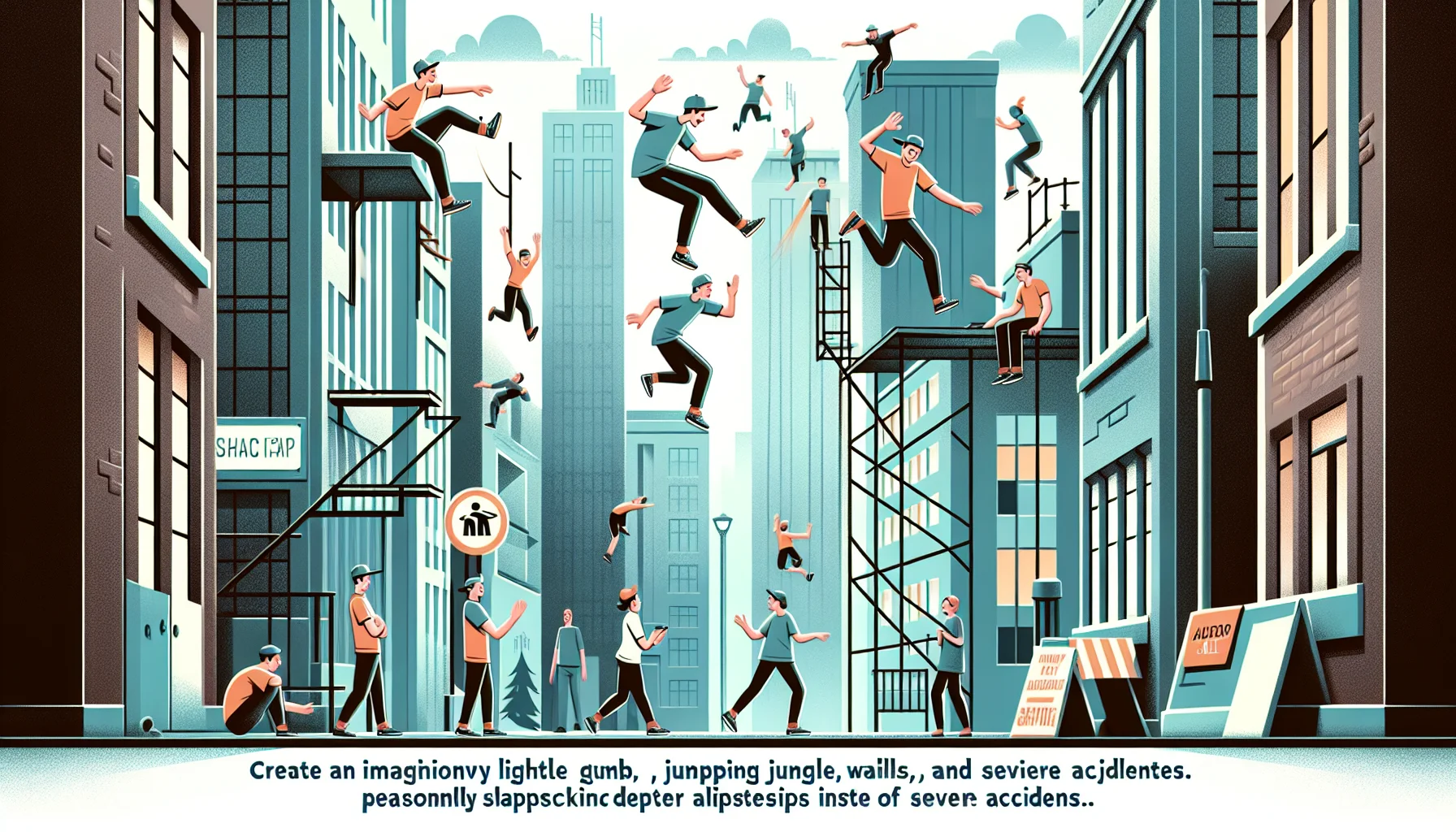Parkour deaths Quiz
Test Your Knowledge
Question of
Understanding Parkour Deaths
Parkour is a training discipline using movement that developed from military obstacle course training. Practitioners aim to get from one point to another in a complex environment, without assistive equipment and in the fastest and most efficient way possible. It involves running, climbing, swinging, vaulting, jumping, plyometrics, rolling, and other movements as deemed most suitable for the situation. Parkour's development from military training gives it some aspects of a non-combative martial art. Parkour is an activity that can be practiced alone or with others and is usually carried out in urban spaces. Parkour involves seeing one's environment in a new way, and imagining the potential for navigating it by movement around, across, through, over, and under its features.
While parkour emphasizes safety, efficiency, and control, its practice in urban environments and its association with high-risk activities have led to concerns over injuries and, in rare instances, deaths. These incidents often result from falls or miscalculations, underscoring the importance of proper training, physical fitness, and judgment in minimizing risks associated with parkour.
The Risks of Parkour
Parkour, while an exhilarating and physically demanding sport, carries with it a significant level of risk. Participants often navigate through complex urban environments, leaping between rooftops, scaling walls, and performing various acrobatic maneuvers. Such activities inherently come with the potential for injury. Common risks include sprains, fractures, and concussions, stemming from falls or misjudged distances. More severe accidents can occur, especially from higher altitudes or more dangerous stunts, leading to life-threatening injuries or even fatalities. The unpredictability of the terrain and the high physical demands of the sport amplify these risks, making safety precautions and proper training essential for anyone involved in parkour.
Notable Parkour Deaths
- Nye Frankie Newman - Died in 2017 after a tragic accident in Paris. Newman was a British parkour enthusiast who was reportedly train surfing when he met his untimely death.
- Pavel Kashin - Known for his attempt to perform a backflip on the edge of a 16-story building in St. Petersburg, Russia, Kashin fell to his death in 2013.
- Andrey Retrovsky - Died in 2015 after falling from a 17-story building in Russia. The 17-year-old's fall was broken by a tree, but he later succumbed to his injuries in the hospital.
- Robert Genevro - In 2015, Genevro died while attempting parkour moves in Colorado Springs. He fell from a building and was found deceased by first responders.
Safety Measures in Parkour
Parkour, a discipline that emphasizes efficiency and fluidity in movement through urban and natural environments, inherently involves risks due to the physical demands and the often unpredictable settings in which practitioners train and perform. Recognizing these risks, the importance of safety measures, proper training, and precautions cannot be overstated. To minimize the likelihood of injuries, practitioners are advised to start with foundational skills, gradually progressing to more complex movements as their strength, flexibility, and spatial awareness improve. Additionally, the use of appropriate gear, such as shoes with good grip and protective clothing, can help reduce the chances of accidents. Scouting locations beforehand to assess potential hazards, practicing in groups for added safety, and learning from experienced instructors also play crucial roles in ensuring a safer parkour experience. By adhering to these precautions, individuals can enjoy the physical and mental benefits of parkour while minimizing the risks associated with this dynamic activity.
Parkour Training and Preparation
-
Training Practices
- Start with basic movements such as running, jumping, and climbing.
- Practice precision jumps to improve accuracy and control.
- Learn rolling techniques to minimize impact on landing.
- Incorporate balance exercises such as rail balancing and quadripedal movement.
- Gradually increase the complexity and difficulty of your routes.
-
Physical Preparations
- Develop core strength for better balance and control.
- Enhance your flexibility through dynamic stretching routines.
- Build endurance through cardiovascular exercises.
- Strengthen your upper body to improve your ability to climb and vault.
- Focus on leg strength for powerful jumps and safe landings.
-
Mental Readiness
- Visualize your runs to mentally prepare for the physical challenges.
- Practice mindfulness to stay focused and present during your training.
- Learn to assess risks and know your limits to prevent injuries.
- Stay patient and progress at your own pace, understanding that skill development takes time.
- Build a supportive community to share experiences and stay motivated.
The Role of Fitness in Parkour Safety
Physical fitness plays a crucial role in ensuring safety during parkour activities. Strength, agility, and endurance are fundamental components that directly impact a practitioner's ability to perform movements safely and efficiently. Strength is essential for supporting the body's weight during jumps, climbs, and vaults, reducing the risk of injury. Agility allows for precise and fluid movements, enabling practitioners to navigate obstacles with ease and minimize falls. Endurance, on the other hand, is vital for maintaining the energy levels required for sustained activity, preventing fatigue-related mistakes. Together, these elements of fitness form the foundation of safe parkour practice, highlighting the importance of a well-rounded physical conditioning program.
Conclusion: Balancing Passion and Safety in Parkour
Parkour, a discipline that combines the thrill of movement with the challenge of overcoming physical obstacles, ignites a unique passion among its practitioners. However, the very essence of parkour, which encourages pushing the limits, also brings with it inherent risks. Balancing this passion with a strong commitment to safety is essential. It is crucial for practitioners to undergo proper training, use protective gear, and practice in safe environments to mitigate risks. By doing so, enthusiasts can continue to enjoy the exhilaration of parkour while minimizing the potential for accidents and injuries. This balance ensures that parkour remains a positive and enriching pursuit, allowing individuals to explore their physical capabilities safely and responsibly.












